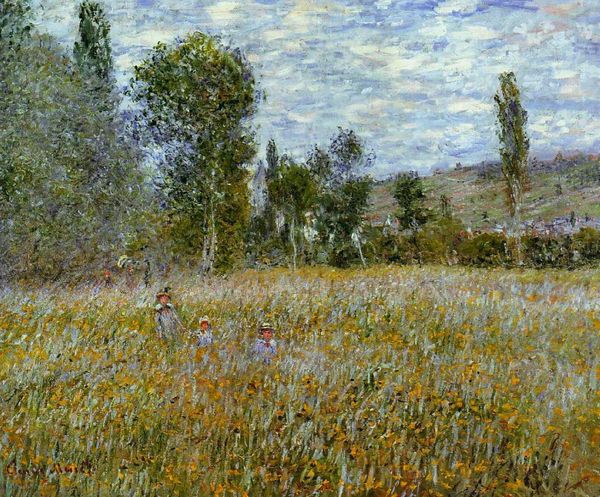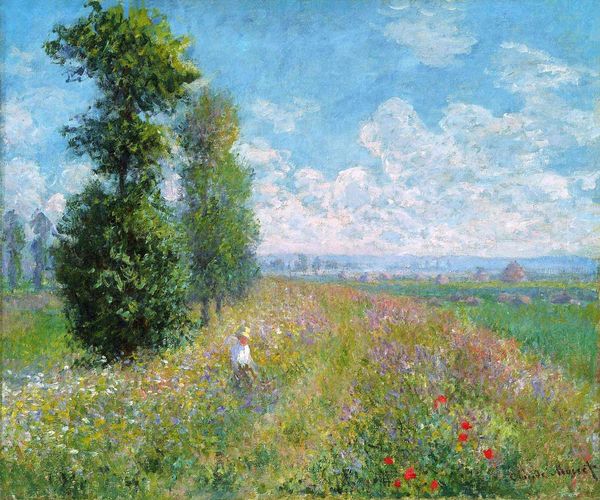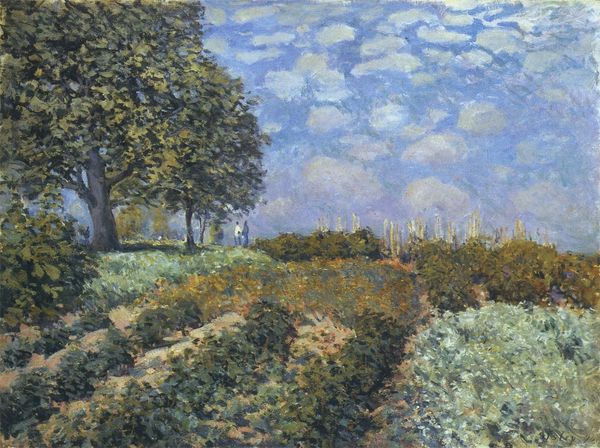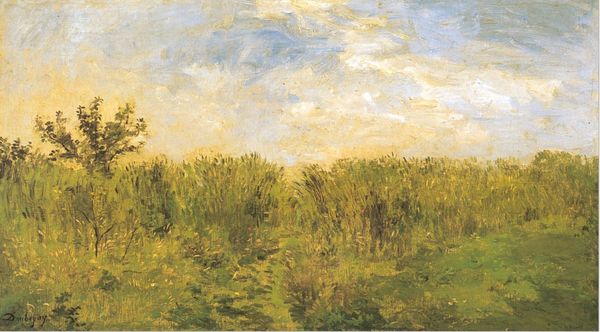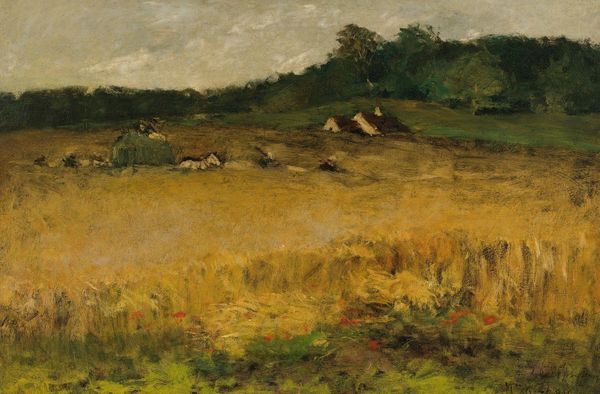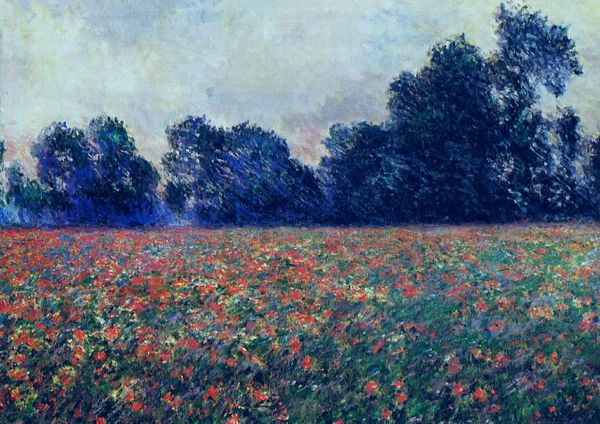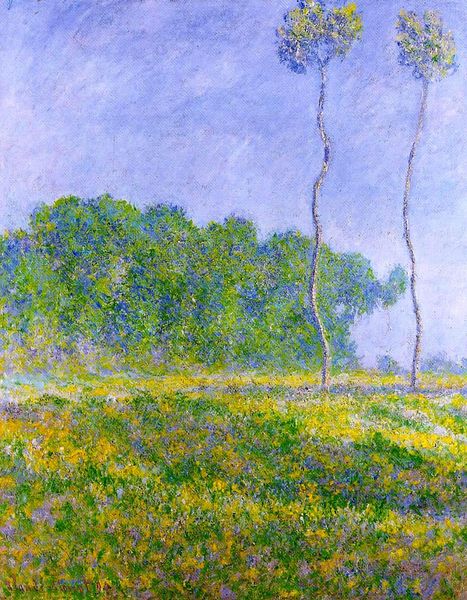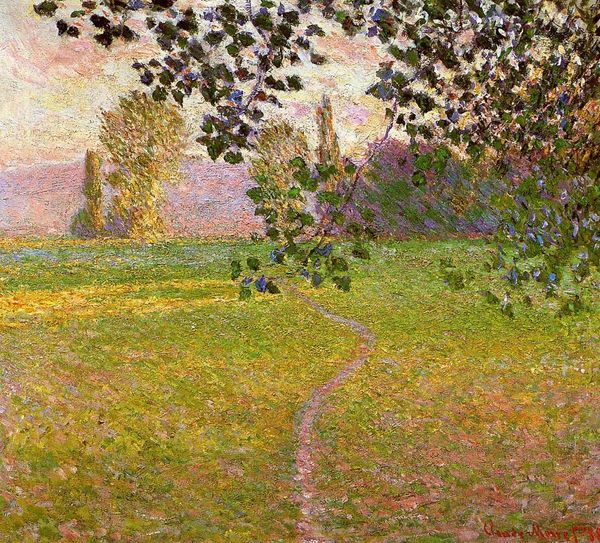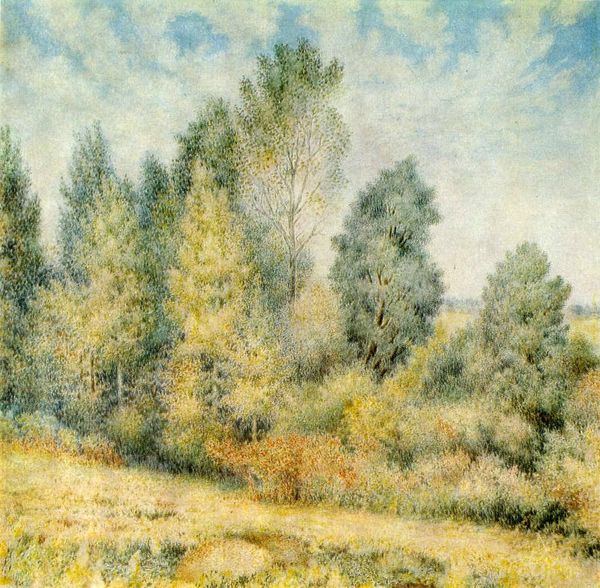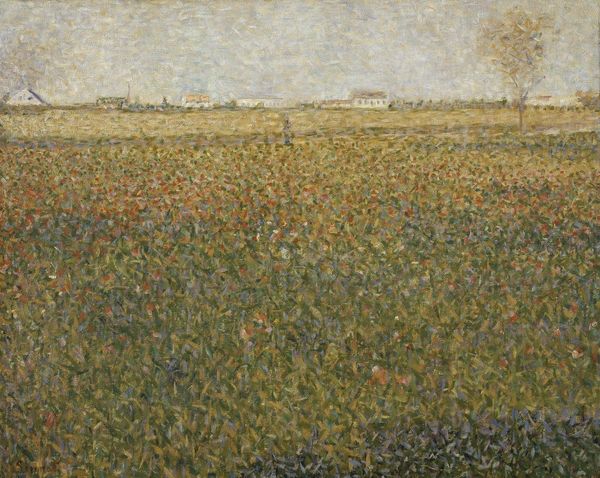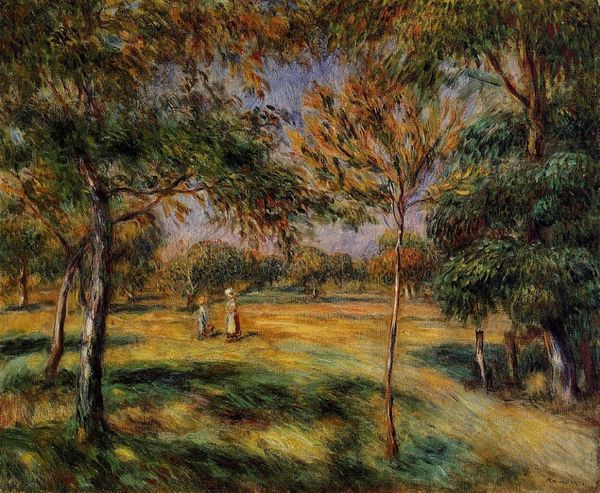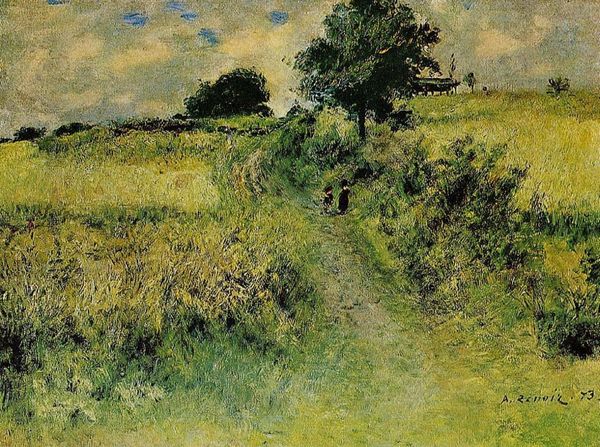
painting, plein-air, oil-paint
#
painting
#
impressionism
#
grass
#
plein-air
#
oil-paint
#
landscape
#
impressionist landscape
#
figuration
#
nature
Copyright: Public domain
Editor: This is "Path through the High Grass" painted by Pierre-Auguste Renoir in 1876, made with oil paint in plein-air. The entire field glows; it's incredibly vibrant! How would you interpret this work within the context of Impressionism's rise? Curator: It's essential to consider the Salon's influence at that time. For decades, the Salon dictated what was 'acceptable' art. Renoir and his contemporaries directly challenged those standards. How do you see this landscape functioning as a quiet rebellion against the academic style? Editor: I see it! It lacks the historical or mythological narratives the Salon preferred. Instead, it's a snapshot of everyday life, but the brushwork is so free! Curator: Precisely! It emphasizes capturing the fleeting effects of light and atmosphere, challenging the notion of art as solely depicting grand narratives or perfectly rendered forms. Think about the burgeoning middle class; were their tastes shifting art's focus towards leisure and the natural world? Editor: Absolutely! They were moving to the suburbs and seeking escape in nature, so this painting could really appeal to them. Curator: And think about the emerging art market! Independent exhibitions offered artists new ways to reach this audience, bypassing the Salon’s control. Do you see this work as democratizing art or aestheticizing the everyday? Editor: Hmm, I think both! It gives importance to ordinary scenes, making them beautiful and worthy of attention. I learned a lot; it’s like Renoir gave the Impressionists the high-ground over academic tastes through fields of tall grass! Curator: And in so doing, invited the viewer into a more personal experience with art, connecting to their own changing society.
Comments
No comments
Be the first to comment and join the conversation on the ultimate creative platform.
